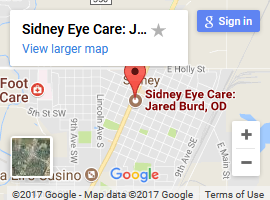
What’s it like to be color blind? Contrary to what the name implies, color blindness usually does not actually mean that you don’t see any color, but rather that you have difficulty perceiving or distinguishing between certain colors. This is why many prefer the term color vision deficiency or CVD to describe the condition. CVD affects men more than women, appearing in approximately 8% of men (1 in 12) and .5% of women (1 in 200) worldwide.
Having color vision deficiency means that you perceive color in a more limited way than those with normal color vision. This ranges from mild, in which you may not even be aware that you are experiencing color differently, to severe, which is perhaps the more appropriate from to be called "color blind" and involves the inability to see certain colors.
CVD can be inherited; it is caused by abnormalities in the genes that produce photopigments located in the cone cells in your eyes. The eyes contain different cone cells that fire in response to a specific color, blue, green or red and together allow you to see the depth and range of colors that the normal eye can see. The type of color blindness and therefore the type of color vision that is impaired, is based on which photopigments are abnormal. The most common form of CVD is red-green, followed by blue-yellow. Total color blindness or the complete inability to perceive color is quite rare. About 7% of males have congenital color blindness that they inherit from the mother's X-chromosome.
Color blindness can also be the result of eye damage, specifically to the optic nerve, or to the area in the brain that processes color. Sometimes an eye disease, such as cataracts, can also impact one’s ability to perceive color. Systemic diseases such as diabetes or multiple sclerosis can also cause acquired CVD.
Living with CVD
Red-green color blindness does not mean only that you can’t tell the difference between red and green, but rather that any color that has some red or green (such as purple, orange, brown, pink, some shades of gray, etc) in it is affected.
You many not realize all of the ways you use even subtle distinctions in color in your daily life. Here are some examples of ways that CVD can impact your life and make seemingly everyday tasks challenging:
- You may not be able to cook meat to the desired temperature based on color.
- Most of the colors in a box of crayons will be indistinguishable.
- You may not be able to distinguish between red and green LED displays on electronic devices that indicate power on and off.
- You may not be able to tell between a ripe and unripe fruit or vegetable such as bananas (green vs. yellow) or tomatoes (red vs green).
- Chocolate sauce, barbecue sauce and ketchup may all look the same.
- Bright green vegetables can look unappealing as they appear greenish, brown or grey.
- You may not be able to distinguish color coded pie charts or graphs (which can cause difficulty in school or work).
- Selecting an outfit that matches can be difficult.
Knowing that one is color blind is important for some occupations that require good color discrimination such as the police officers, railway workers, pilots, electricians etc. These are just a few of the ways that CVD can impact one’s daily life. So is there a cure? Not yet.
While there is no cure for CVD, there is research being done into gene therapies and in the meantime there are corrective devices available including color vision glasses (such as the Enchroma brand) and color filtering contacts that for some can help to enhance color for some people. If you think you might have CVD, your optometrist can perform some tests to diagnose it or rule it out. If you have CVD, you can speak to your eye doctor about options that might be able to help you experience your world in full color.

